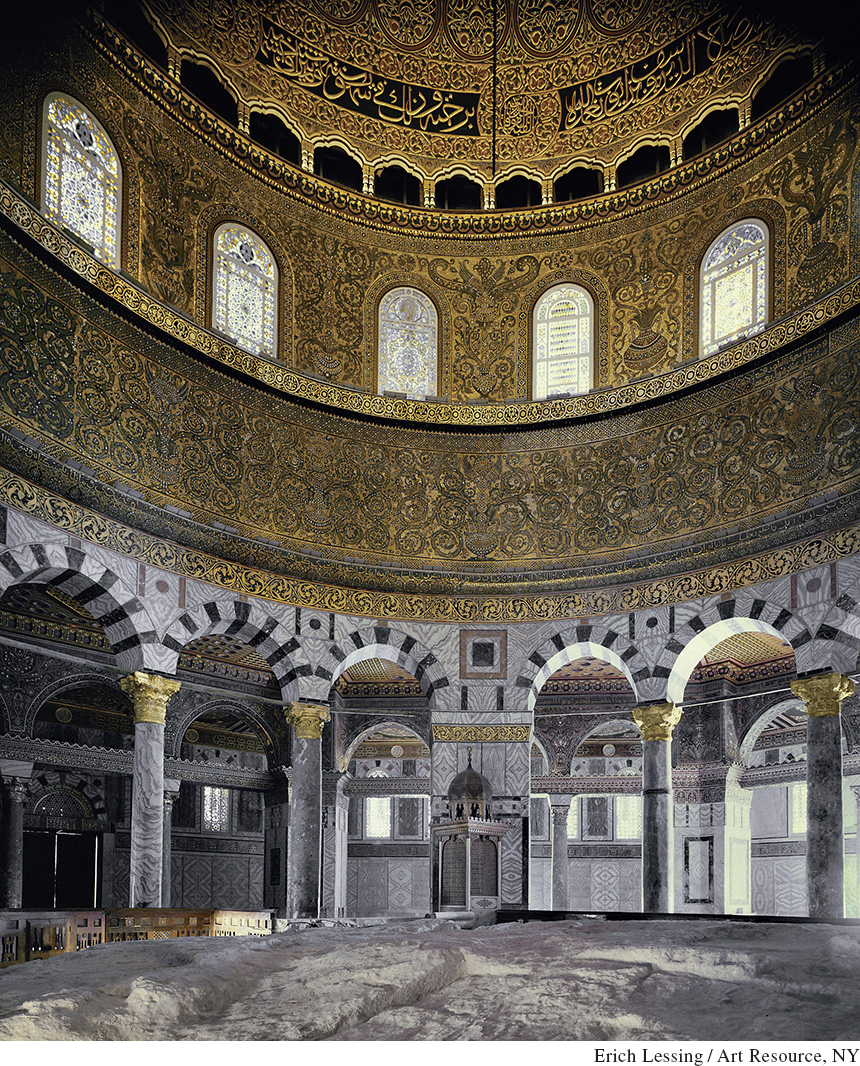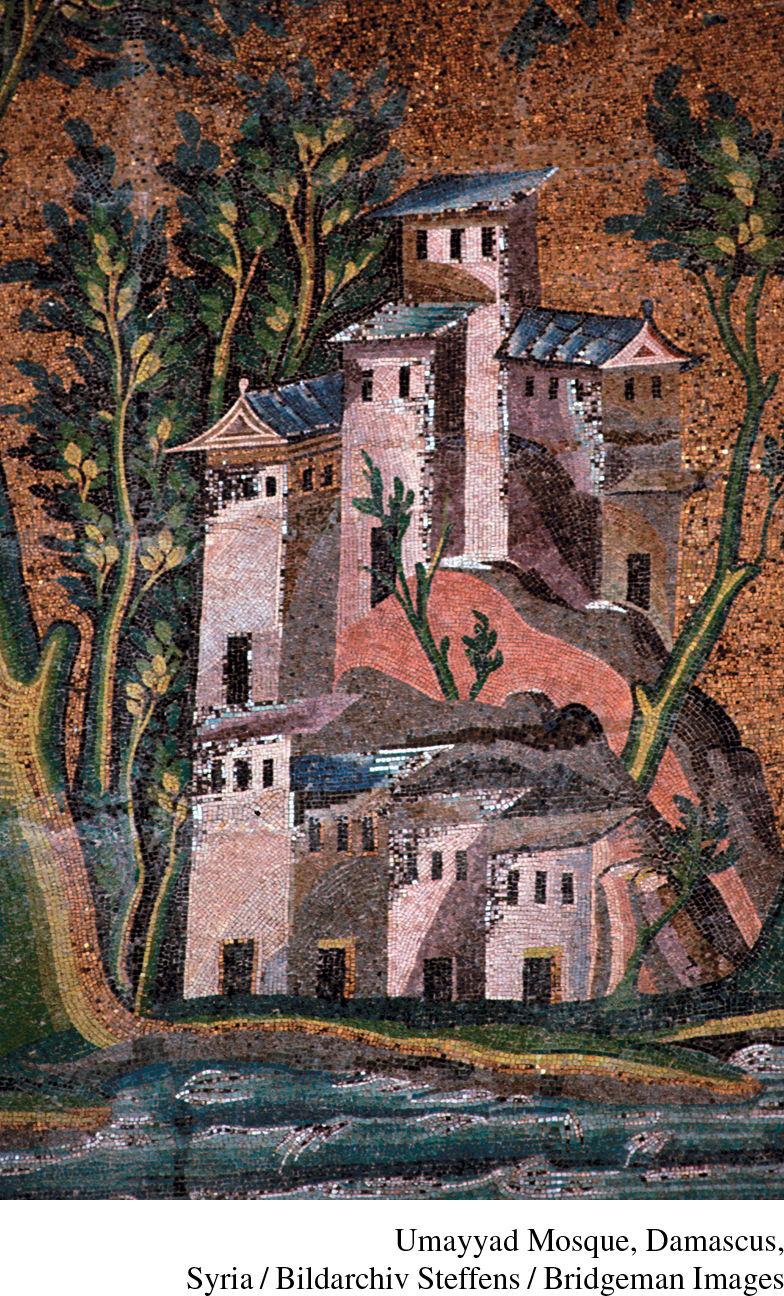Peace and Prosperity in Islamic Lands
Peace and Prosperity in Islamic Lands

Ironically, the definitive victories of the Muslim warriors in the seventh and early eighth centuries ushered in a time of peace. While the conquerors stayed within their fortified cities or built magnificent hunting lodges in the deserts of Syria, the conquered, including Christians and Jews, went back to work, to study, to play, and to worship. Under the Umayyad caliphate, which lasted from 661 to 750, the Muslim world became a state, its capital at Damascus, in Syria.
REVIEW QUESTION How and why did the Muslims conquer so many lands in the period 632–750?
Borrowing from institutions well known to the civilizations they had just conquered, the Muslims issued coins and hired Byzantine and Persian officials as civil servants They made Arabic a tool of centralization, imposing it as the language of government. (See “Seeing History: Who Conquered Whom? A Persian and an Arabic Coin Compared.”)

The Umayyads took advantage of the vigorous economy in both the cities and the countryside to preside over a literary and artistic flowering. At Damascus, local artists and craftspeople worked on the lavish decorations for a mosque that used Roman motifs. At Jerusalem, the mosque called the Dome of the Rock used Christian building models for its octagonal form and its interior arches. Muslim scholars determined the definitive form for the Qur’an and compiled pious narratives about Muhammad, called hadith literature. A literate class—consisting mainly of the old Persian and Syrian elites, now converted to Islam—created new forms of prose and poetry in Arabic. Supported by the caliphs, these writers reached a wide audience that delighted in their clever use of words, their satire, and their verses celebrating courage, piety, and sometimes erotic love:
I spent the night as her bed-companion, each enamored of the other, And I made her laugh and cry, and stripped her of her clothes.
Poetry like this scandalized conservative Muslims, brought up on the ascetic tenets of the Qur’an. But it was a by-product of the new urban civilization of the Umayyad period, during which wealth, cultural mix, and the confidence born of conquest inspired diverse and experimental literary forms. By the time the Umayyad caliphate ended in 750, Islamic civilization was multiethnic, urban, and sophisticated—a true heir of Roman and Persian traditions.